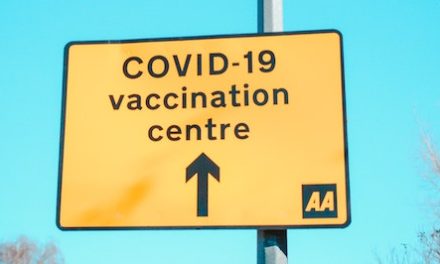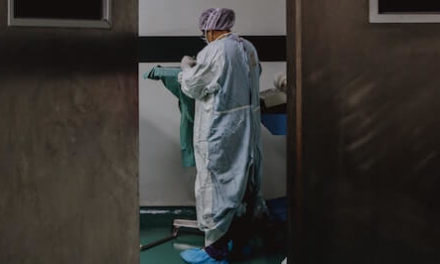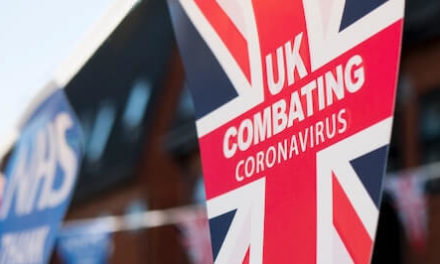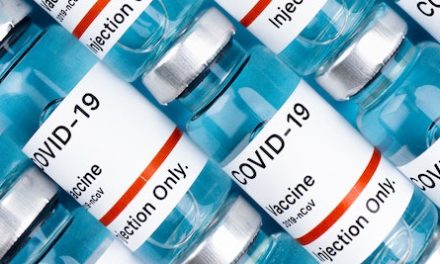Supervised by: Fernanda Farina LLB MSc PhD. Fernanda is a qualified lawyer who has recently earned her DPhil in Socio-Legal Studies at the University of Oxford. She also holds an MPhil in Law from the University of São Paulo and a law degree, with honours, from the Pontifical Catholic University of São Paulo. She currently works as a Senior Legal and Policy Adviser at a leading thinktank.
A Brief Introduction to Censorship and Regulation: Boundaries and Definitions
Censorship and regulation are two terms often used interchangeably and, typically, they are each poorly defined. Not only are censorship and regulation defined differently by diction and legality, their presence in different countries can have wildly different effects on society and technology. Regulation is a typical tactic used by countries to remove generally harmful or illegal content, such as child pornography or terrorist content. There is not one place in the world that exists without basic regulation, nor is regulation inherently bad. Defining censorship, however, can be a bit messier, as its rules and exceptions can change depending on the needs of each country. To put it simply, censorship occurs when individuals or groups attempt to prevent others from saying, printing, or depicting words and images that may be perceived as harmful. Censorship typically involves an infringement on a person’s human right to free speech, as the term implies prevention of a person’s expression. There are, of course, times when free speech may be censored for the general good. If, for example, a person is spreading gruesome content, available for the public to see, then yes, authorities in many countries are allowed to remove said content.
This blurred line between censorship and regulation can shift and change from country to country, and can be heavily dependent on multiple factors. In the next few sections, the relationship between the two will be explored in the context of technology in three different countries, each with different degrees of control. North Korea, the United Kingdom and New Zealand will be looked at and compared in decreasing order of how aggressively they apply censorship tactics and how these policies affect their respective populations.
Methodology
In order to determine when state content regulation becomes censorship, we will be comparing North Korea, the United Kingdom and New Zealand against the Reporters Without Borders Press Freedom Index. We will also be reading academic articles and journals concerning censorship, and then applying our reading to each country. We will use secondary data methods for all countries, as we are unable to collect primary data on North Korea and New Zealand, due to access restrictions at the time of writing. Initially, Google Scholar was used to collect a broad sample of the article types available and broad search terms were used to establish a list of peer-reviewed articles, which we accepted. We did struggle, however, to understand the legislation relating to censorship and regulation in North Korea, as their government rarely makes legislation public to the international community. This means that we are, unfortunately, unable to compare laws between all three countries. We chose North Korea, New Zealand and the United Kingdom as North Korea is widely regarded as a censored country, whereas New Zealand and the United Kingdom are considered progressive countries that don’t employ such legislation very drastically. We suggest that these reputations mean that, if and when British or New Zealand authorities do censor people, it may not be as noticeable, because people don’t even consider the idea that these countries may censor their populations.
North Korea
North Korea is one of the most censored countries in the world, as shown by the Reporters Without Borders (RSF) Press Freedom Index, which ranks countries on a scale ranging from a good situation to a very serious situation. A country scored 55.01 or higher (out of 100) is regarded as in a very serious situation. North Korea scored 81.28 on their most recent ranking in 2020, making it the second most censored country in the world, second only to Eritrea, which was given a score of 82.05 (1).
The degree of freedom is calculated by compiling experts’ responses to a questionnaire by Reporters Without Borders. The questionnaire, which is completed online, includes 87 questions focusing on press freedom and is translated into 20 languages. It is targeted towards lawyers, media professionals, and sociologists. It evaluates pluralism (scorePlur), media independence (scoreInd), media environment and self-censorship (scoreEA), legislative framework (scoreCL), transparency (scoreTra), the infrastructure quality that supports the production of news and information (scoreInf), and abuses (scoreExa).
Pluralism measures to what degree are different opinions represented in the media—in North Korea, the media is controlled by the government and there is one television channel called the Korean Central News Agency, therefore there will be a very narrow scope of opinions represented in the media. Media independence looks at how the media functions separately from sources of political, governmental, economic and religious power and influence. Similarly to pluralism, the media in North Korea is not independent of government or political control. Environment and self-censorship analyses the conditions under which news and media providers work. North Korea operates as a dictatorship and so news and media providers will be restricted by the government in aspects such as the media they can share and advertise, and that which they are able to access themselves. The legislative framework measures the impact of the legislation that lays out structures for governing news and information activities, while transparency refers to the transparency of the institutions and strategies that affect the production of news and information. The quality of the infrastructure that supports the production of news and information, while similar to the conditions under which news and media providers work, also includes abuses and acts of violence against journalists and the media during the evaluated period of time. Finally, a key factor that resulted in North Korea’s rank is the abuses factor, which measures the level of abuses and violence within a country, of which North Korea’s is relatively high due to their human rights offences. All of the ranks are given a score between zero and one hundred. The scores are calculated using the following three formulas:


North Korea’s overall global score is 81.28, meaning it is categorised as a ‘very serious situation’, which encompasses scores between 55.01 and 100 points (1). North Korea prevents the distribution of media by cryptographically attaching data to digital files. A valid signature can only be created by authoritative organisations that can access a private part of a preinstalled key pair, and consumer devices verify them with the public part. Censorship ensures the distribution of digital media files is only possible if they have been reviewed and approved by the government. Any non-approved media files cannot be opened on a device that uses compatible signature checks. Whilst network-level control over media distribution can be effective on a national scale, how effective it ultimately is is limited in a country like North Korea. The country lacks thorough coverage of telecommunication networks, especially outside of cities like Pyongyang, meaning most devices will likely never be connected to any kind of national network. Furthermore, as media from outside of North Korea has historically been shared and consumed by removable media like flash drives and memory cards, network-level measures are ineffective (2).
In late 2014, ISOs of Red Star OS were leaked to the general public—prior to this, there was very little information available outside of North Korea. The release included a desktop and server edition which provides a KDE-based graphical environment that reassembles the look of Mac OS X. The default installation comes with a suite of software that allows users to employ it as a general-purpose operating system. The system utilises an advanced network of processes that monitor each other, thus ensuring the integrity of the system. The files that are responsible for starting these processes are guaranteed by Security-Enhanced Linux (SELinux) rules and a daemon called securityd which checks the integrity of various files with a hardcoded list of checksums. Once SELinux is disabled, altering these files causes an instant reboot of the system. These checks also take place in the boot process, resulting in any alterations causing the system to become trapped in a reboot loop, rendering the it useless. The goal of these integrity measures is to protect two processes:
1. Scnprc: this is a programme disguised as an anti-virus tool that runs in the background and checks the files against a list of patterns.
2. Opprc: this is a process started by scnprc, which carries out activities that separate it from its parent process. Its main feature is that it applies watermarks to media files, containing the hard disk serial, which allows third parties to identify a specific Red Star OS, for example.
Before applying watermarks to media files, opprc encrypts them with DES and a hardcoded encryption key. Developers might attempt to obscure the content of the watermarks or make it harder to alter them, however, due to the hardcoded key, these watermarks can be mimicked with little effort (2).
Furthermore, the North Korean regime uses the Korean Central News Agency (NCNA) to spread propaganda and prevents the distribution of information that paints the government in a less favourable light. Journalists and other members of the media are censored by means of imprisonment, legal repression, internet restriction and are limited to government-run agencies that decide if the content is published or broadcast. This includes the Associated Press Bureau, located in the KNCA’s Pyongyang headquarters. Internet access is mainly restricted to the political elite, with school and state institutions having highly restricted access. Despite this, the government has ensured that it remains a part of the public’s lives through the KCNA (3).
There are also prison camps, such as Kwanliso 16—which is currently the largest known political prison camp in North Korea—where people are sent for criticising the authorities, along with officials who are thought to have failed to implement policies, those who are believed to be part of anti-government groups, and any family members of these perceived offenders. People are sent to these camps without charge, let alone a trial. Describing his time at the Kwanliso 16, a former prison guard recounted stories of inmates being forced to dig their own graves and of female prisoners being raped by visiting officials and then disappearing, presumably having been executed. In 2011, there were an estimated 20,000 people imprisoned in Kwanliso 16, and over 50,000 in Kwanliso 15. Before its closure in 2014, two in every five people imprisoned in Kwanliso 15 died of malnutrition, with inmates being limited to 600g of corn per day for adults and 300g for children. These camps further censor the country by instilling fear into people, both inside the camp and outside it, should they speak against the government (4)(5). Despite this, North Korea has ratified many key international human rights treaties such as the Convention on the Rights of the Child (CRC), the International Covenant on Civil and Political Rights (ICCPR), and the International Covenant on Economic, Social and Cultural Rights (ICESCR), yet is known to regularly ignore their requirements. Moreover, in 2014, the UN Commission of Inquiry concluded that the government committed crimes against humanity, including extermination, murder, enslavement, torture, imprisonment, rape and other forms of sexual violence, and forced abortions (6).
The United Kingdom
Regulation is a lot more prevalent than one may assume in countries like the UK, which ranks 33rd on the Press Freedom Index, with a score of 21.65 (1). From obscenities censored on the radio to the removal of media that promotes terrorism, censorship happens beyond the public’s awareness much of the time, due to the fact that it does not impact the daily lives of the vast majority of civilians. British citizens, for example, have a right to freedom of expression under the common law (7) and the European Convention, making freedom of expression and speech a human right deserved by all citizens and people in the UK, but there are some exceptions to this rule. These, for the most part, revolve around the prevention of harm to others or incitement of such actions, as well as censorship of other materials such as those related to preventing the spread of information received in confidence or the promotion of the abolition of the monarchy and treason (7). However, much of this censorship is not enforced due to the difficulty of actually doing so, especially after the invention of the internet which vastly accelerated the spread of information.
The internet poses a plethora of challenges in regards to the maintenance of regulations, due to factors including the unwillingness of online industry bodies to disclose user identity, the sheer volume of online content that is produced, and the failures of self-regulatory systems like those found across most social media. Depending on the nature and gravity of a message being put across the internet, different actions can be taken, including the use of anti-terrorism protocol, digital media investigators, or the secret service. Nonetheless, deplorable material can still be found across the internet v and a lot of it is somewhat difficult to regulate, punish or remove where necessary. For instance, the first police unit for tackling internet crime was only created by Scotland Yard in 2017 and in its research found that of the 1,851 cases of online hate crimes logged by the unit, less than 1% resulted in any kind of conviction or recognition (8). This is only a miniscule fraction of all the online hate crimes committed, and the proportion of these crimes that are actually reported is probably even less than 1%. This expresses the dire need for change to the current regulations in place for online hate crimes. On top of this, it makes defining censorship and what needs to be censored much more important, as the internet has created a new platform by which information can be spread and is becoming harder to regulate as it develops. This is due to the fact that everything can be copied easily and physical copies are no longer the main medium by which information is spread.
There are many ways in which media can be regulated, such as through the medium of regulatory bodies like the British Body for Film Censors/Classification (BBFC), which classifies all video and film works with a certificate including an age rating. Should the BBFC decide not to give a certificate, the film will not be given license to be broadcast or shown in cinemas. There are also special age ratings such as R18, given by the BBFC, which indicates that the media can only be shown in licensed sex shops and strictly only to adults. There is also some further restricted content that cannot be shown under any circumstances, including anything that promotes sexually abusive activities. Such material is restricted by the BBFC through compulsory cuts or refusal to classify, meaning it cannot be easily distributed (9)(10). Similar filtration approaches are taken by other regulatory bodies for things like radio and literature; however, a lot of the time, this media still manages to be distributed through the internet and the index for media deemed worthy of censorship is often very fluid and changeable. This change particularly occurs when the country is in civil unrest, such as during the Gulf War. During this period of time, a lot of very popular songs like “Killer Queen” by Queen and “Waterloo” by ABBA were not allowed airtime on the radio due to their connections to the war. So, although most people may not consider the removal of some media from being shown censorship, due to the fact that it protects the general public from potentially harmful and unsettling works for the greater good of the consumers (11), this balance may not always be achieved as it can very easily change should the circumstances be altered. Nonetheless, we can still view the UK as less restrictive in its censorship than many other countries due to its fairly minimal enforcement and minimal punishments.
The majority of the population of the UK also believes that there is importance in the regulation of harmful material and, in many cases, this goes beyond the existing bounds of UK legislation and punishment. A study carried out by Redfield & Wilton suggested that, of 1500 people, 62% believed that more action should be taken to censor content on social media that is deemed discriminatory and only 18% fully disagreed with the question. Furthermore, 55% believed that the television regulator Ofcom should have greater powers to fine broadcasters who make comments that were offensive. This was only opposed by 12% of the sample (11). Overall, this solidifies the fact that regulation is much more beneficial than disadvantageous and it seems to be the general consensus that regulation is not only beneficial but necessary for the general wellbeing of consumers. However, there is a very fine line between what is considered to be censorship and regulation, differing even from person to person.
New Zealand
In New Zealand—a country generally thought of as progressive and free of censored content—there is actually a moderately high amount of censorship. The country ranks 8th on the Reporters Without Borders Freedom Press Index, with a global score of 10.04. This is categorised as a ‘good situation’ (1). New Zealand does not censor as much of the country’s news and media intake as North Korea, but it does monitor its internet significantly more than the U.S. or U.K might, positioning it on something of a middle ground in terms of censorship. For instance, the Office of Film and Literature Classification (OFLC)—a branch of the New Zealand government—is dedicated to complete observation, constant monitoring and approval of all movies, television, books, web pages, and video games (12). Under this umbrella, there are many elements of media that can be classified as objectionable or inappropriate, though the branch mainly targets sexual abuse and the exploitation of young people, as well as content the branch finds disturbing, violent, or “injurious to the public good” (13).
The OFLC passed a web filter specifically for this kind of dubious content, with the filter itself blocking hundreds of websites across New Zealand. While the removal of blatant illegal content is simply regulation, this web filter has also been known to block websites without a display of illegal content, thus classifying these policies as censorship. More recently, further legislation has been passed by the OFLC to combat terrorist content and activities on social media, after a gunman live-streamed his violent terrorist attack on social media (14). This legislation is essentially another web filter with an inclusion for social media content, with the filter swiftly blocking objectionable content and rendering it essentially invisible. Other kinds of censorship throughout the country relate to the protection of New Zealand, campaigns, and security of army communications, which can be enforced at any time.
Free speech is also a long-debated topic in New Zealand, as shown by a recent event involving a man spreading white supremacist ideals. Brenton Tarrant—a known mosque shooter and white supremacist—released his manifesto entirely based on white supremacist ideals, publicly sharing both the manifesto and shootings (14). The government immediately banned this manifesto as well as videos of his violent acts. Any citizen of New Zealand found with this content on their personal devices could be legally imprisoned for 10-14 years. Free speech advocates, along with Tarrant himself, argue that this removal is an infringement on the human right to free speech, but government officials classify the removal as legal, due to the violent and terroristic nature of his acts. Of course, by definition, this is a classic instance of regulation, not censorship, although Tarrant’s arguments imply otherwise. The removal of his violent videos for the good of the overall public is necessary, as this kind of content is harmful by nature and can have a negative effect on the people. However, if his published ideals were less violent and were removed in the same way, this would be considered censorship. Removal of content solely relating to his beliefs—popular or not—would be an infringement of Tarrant’s right to free speech.
Conclusion
In conclusion, censorship occurs when a country removes media from online, not for legal purposes, but because they feel their nation shouldn’t be able to access it. The internet is causing us to re-evaluate what censorship is, as we no longer have hard copies of everything and it is a lot easier to share information and data across the world. Some countries and nations, for example North Korea, censor more than others, and there are harsher repercussions within the country for breaking these rules. Repercussions vary from nation to nation, with North Korea implementing prison camps, forced abortions, rape and execution, whereas the UK implements fines, with prison sentences being the most extreme form of punishment.
Footnotes:
1. Reporters without borders, ‘2021 World Press Freedom Index’ (Reporters Without Borders, 1 January 2021) <https://rsf.org/en/ranking> accessed 2 November 2021
2. Niklaus Schiess, ‘Governmental Control of Digital Media Distribution in North Korea: Surveillance and Censorship on Modern Consumer Devices’ (Mirror Adversec, 26 May 2017) <https://mirror.adversec.com/dprk/docs/governmental_control_of_digital_media_distribution_in_north_kor ea-nschiess.pdf> accessed 13 November 2021
3. Laura Cardona, ‘Modes of Censorship in the World’s Five Most Censored Countries’ (University of Florida: International Review, Spring 2017) <http://sites.clas.ufl.edu/polisci/files/UFIR-Spring-2017.pdf#page=37> accessed 2 November 2021
4. Amnesty International, ‘North Korea: Political Prison Camps’ (Amnesty International Media Briefing, 3 May 2011) <https://www.amnesty.org/en/wp-content/uploads/2021/07/asa240012011en.pdf> accessed 2 November 2021
5. Amnesty International, ‘North Korea: The inside story’ (North Korea, 16 February
2017) <https://www.amnesty.org.uk/North-Korea-prison-camp-officials-raped-women-killed-secret> accessed 2 November 2021
6. Kenneth Roth, ‘North Korea: Events of 2019’ (World Report 2020, 2020) <https://www.hrw.org/world-report/2020/country-chapters/north-korea#> accessed 2 November 2021
7. Human Rights Act 1998 cl Article 10
8. Henry Vaughan, ‘Less than 1% of cases reported to online hate crime unit resulted in charges’ (Independant, 2019) <https://www.independent.co.uk/news/uk/home-news/online-hate-crime-report-charge-sadiq-khan-a9263316.ht ml> accessed 13 November 2021
9. Video Recording Act 1984 cl (7-8)
10. Licensing Act 2003 cl (20)
11. Redfield & wilton research team, ‘Plurality of Britons and Government Censorship’ (Redfield & Wilton strategies , 25 July 2021) <https://redfieldandwiltonstrategies.com/plurality-of-britons-would-support-government-censorship-of-sexist-ho mophobic-or-racist-books/> accessed 10 November 2021
12. Peter Clayworth, ‘Story: Censorship’ (Te Ara – The Encyclopedia of New Zealand, 22 October 2014) <https://teara.govt.nz/en/censorship> accessed 13 November 2021
13. Tom Peters, ‘New Zealand government introduces internet censorship legislation’ (World Socialist Web Site, 8 June 2020) <https://www.wsws.org/en/articles/2020/06/08/nzit-j08.html> accessed 13 November 2021
14. Tim Pool, ‘Free speech debate in New Zealand after mosque slayer’s manifesto banned’ (RT, 24 March 2019) <https://www.rt.com/news/454640-new-zealand-free-speech-censorship/> accessed 13 November 2021




